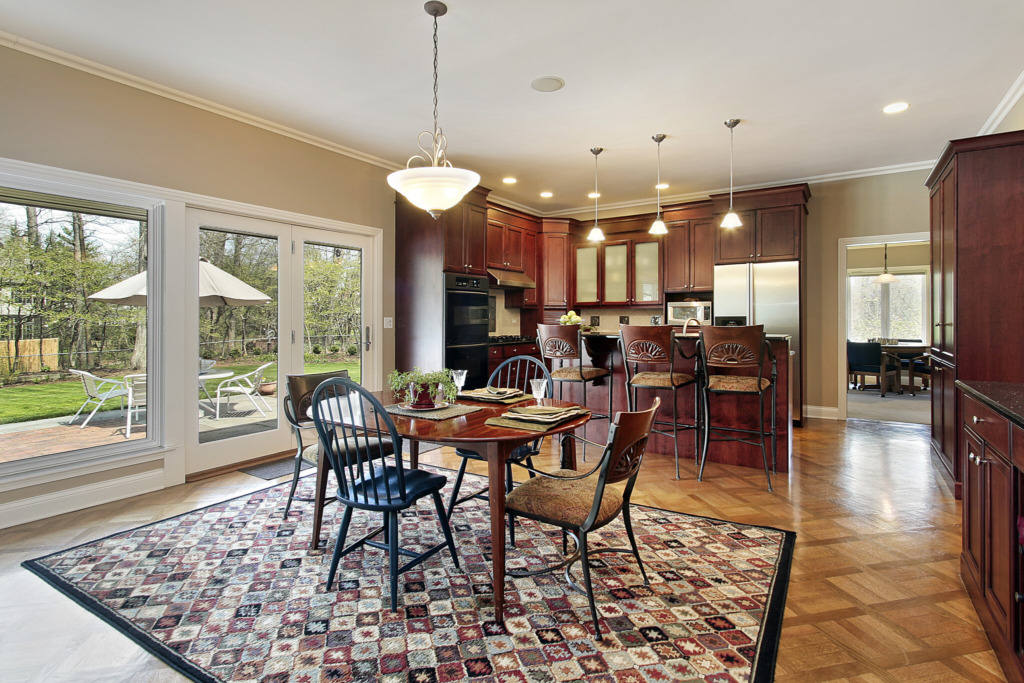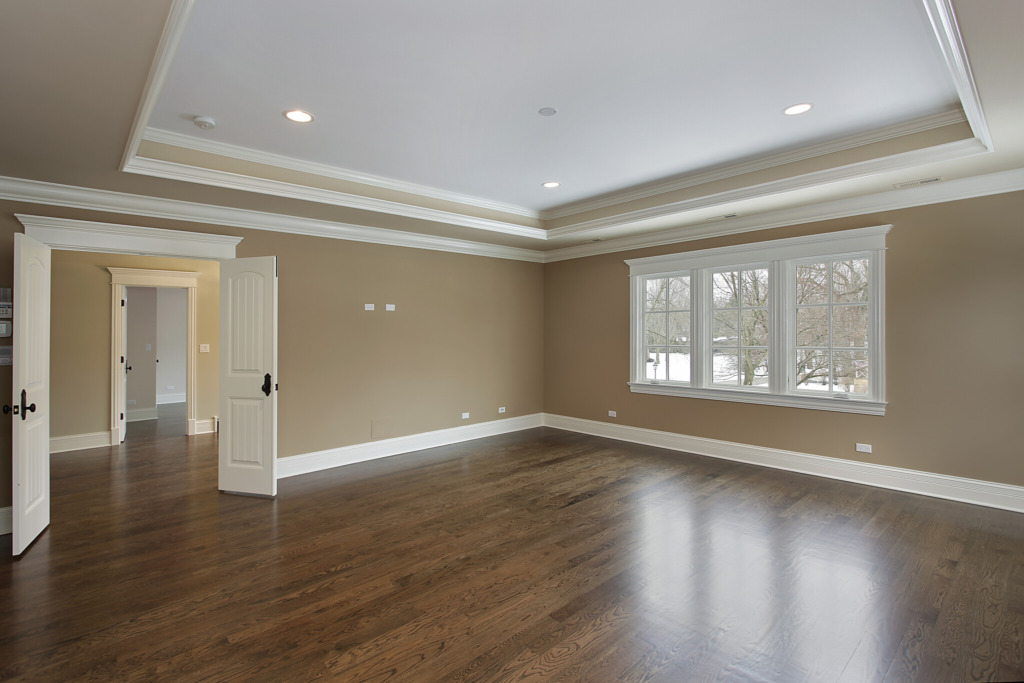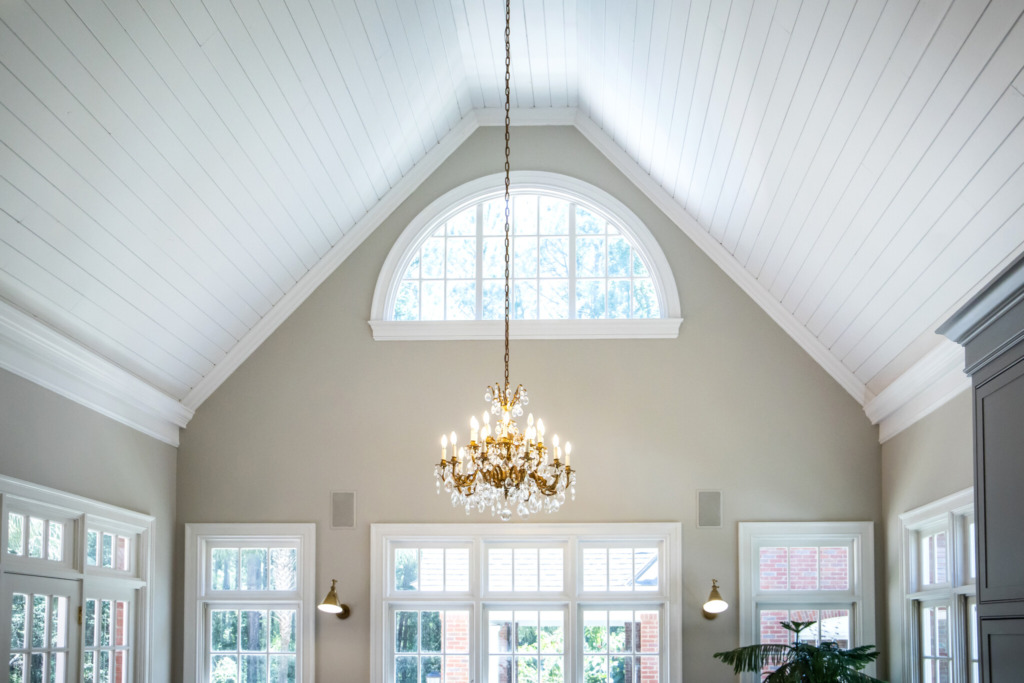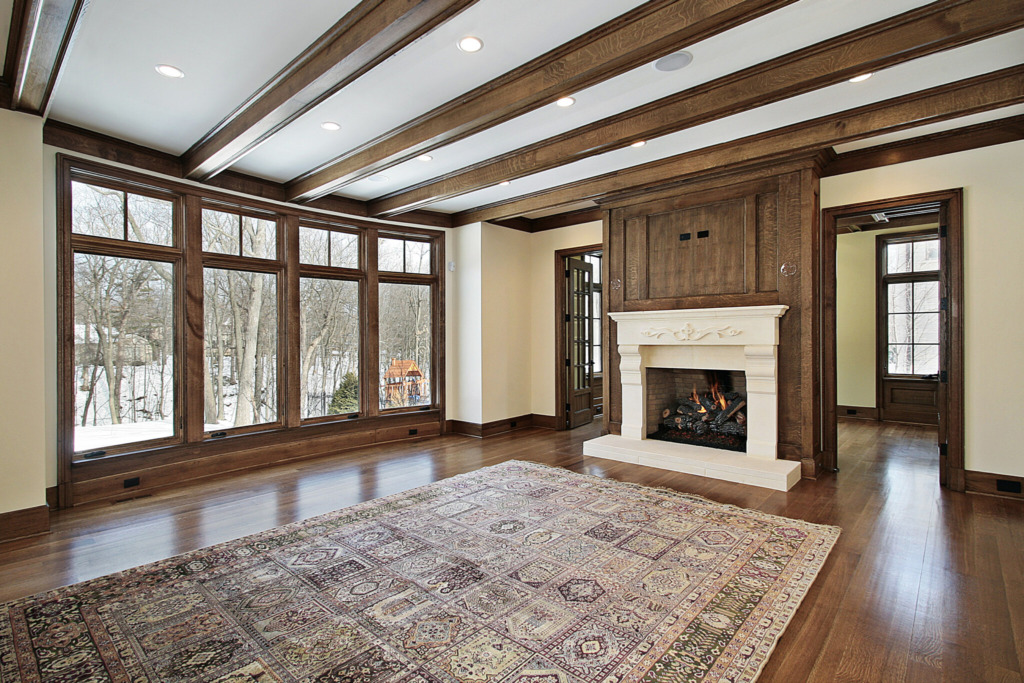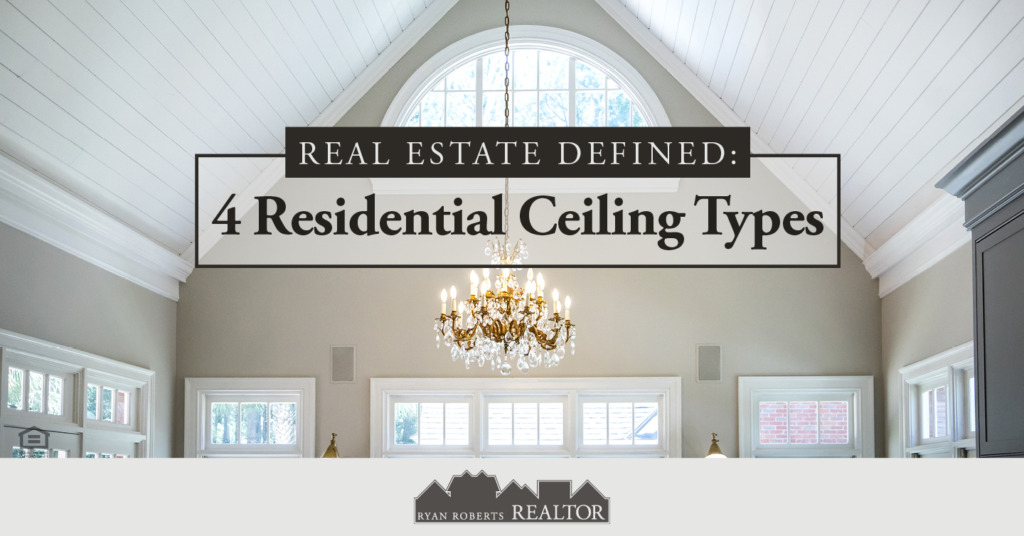
The design of your ceiling is an important consideration when designing the interior of your home. This not only plays a part in the aesthetic of your home, but also in its functionality. There are different ceiling types that are best suited for specific room heights and architecture styles. Get to know these four residential ceiling types so that you can be sure you know what options you have and what is right for you.
Traditional ceiling
A traditional ceiling is a flat and seamless surface. This is the simplest type of ceiling and is often finished with drywall.
The standard ceiling height in homes is nine feet, and raising this height anywhere between 10 and 13 feet can give rooms a more spacious feel. Lowering this standard to eight feet can also create a cozy feel, but if it is too low, your room can then feel claustrophobic.
Tray ceiling
Tray ceilings have a perimeter of at least nine feet high, with a central portion that is raised about a foot higher. This ceiling type is also known as an inverted or recessed ceiling.
Used to create the illusion of height and a sense of luxury, tray ceilings can ultimately add value to your home. Installing a tray ceiling typically costs between $3 and $5 per square foot, depending on your home’s location, room size, and the amount of work that needs to be done.
Vaulted ceiling
Featuring a central arch pulling your attention upward, vaulted ceilings can come in many different styles.
Cathedral ceiling
Named after the interiors of Europe’s grand cathedrals, this ceiling has equal sloping sides with a central point that is higher than the two sides.
Barrel vault
Consisting of a single curved arch, barrel vault ceilings are built under a room’s rafters.
Groin vault
A groin vault ceiling is made up of two barrel vaults that intersect at 90-degree angles, resulting in four convex or outward-curving ribs rising from the corners of the room.
Cloister vault
A cloister vault ceiling, while similar in appearance to a groin vault, is structurally very different. The arch rises from the middle of each wall, instead of the corners, while the ribs concave curving inwards.
Domed vault
A domed vault ceiling is a vaulted ceiling with a central, circular arch.
Of these residential ceiling types, vaulted ceilings come in the most variation and are best suited for large homes with foyers and grand living areas.
Beamed ceiling
Ceilings with visible beams, such as timber beams, are known as beamed ceilings. This type of ceiling creates a rustic charm and is commonly found in farmhouse-style homes.
Houses today are typically built of steel frames with lightweight roof boards made out of fiber and cement, which can cause the price of beamed ceiling construction to be higher for your exposed wood. There are other options, though. You can also install beams made of fiberglass or polyurethane.
It is important to know that true beamed ceilings do not have much insulation and are not as energy-efficient as other ceiling types. Take this into consideration when choosing the right ceiling for your home.
Summary
When it comes to choosing a ceiling for your home, you should never underestimate what it can do. Ceilings can enhance how your room looks as a whole and even how it works structurally. This short guide to residential ceiling types can help outline and narrow down your choices. And remember—not every type of ceiling is suitable for every home.
Looking for an expert on all things real estate for your next home? Contact Ryan Roberts today! To learn more about real estate and stay up to date on community events, continue reading our blog.


